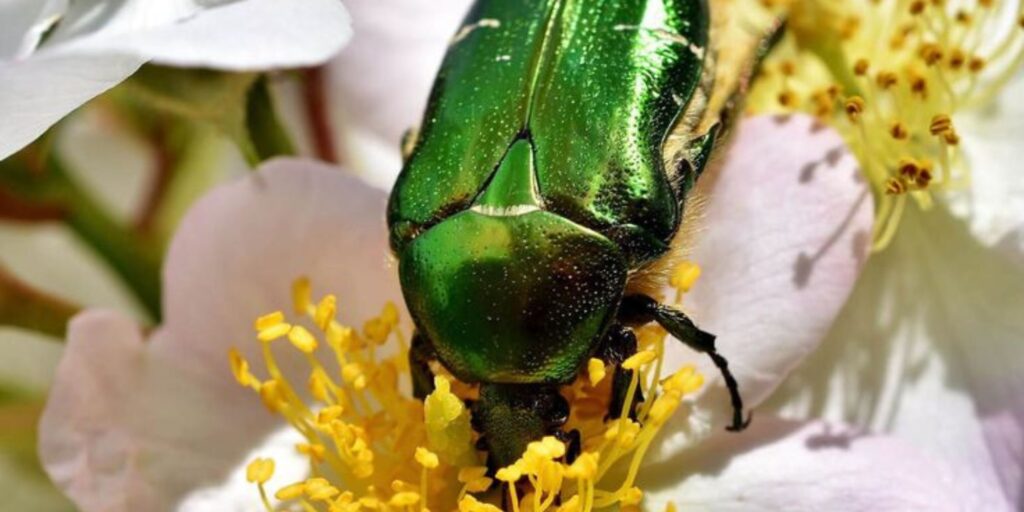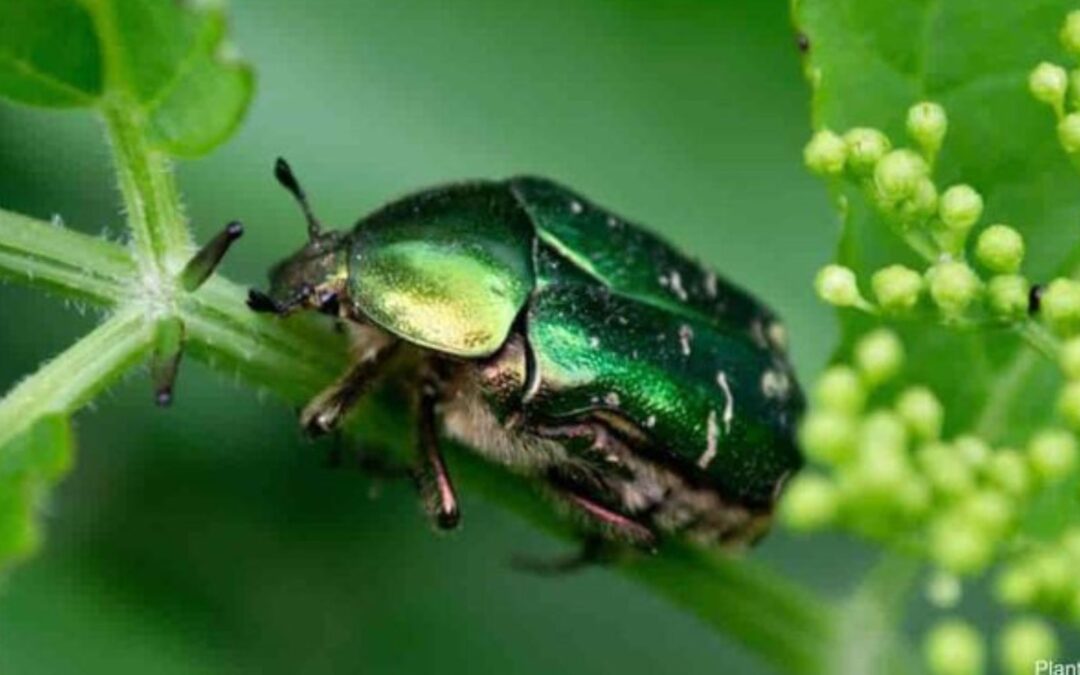Have you ever spotted a shimmering green beetle and wondered about its story? Meet the Figeater Beetle, a captivating creature renowned for its vibrant hues and intriguing life cycle. These fascinating insects are not just pretty faces; they have an important role in their ecosystems. From their unique behaviors to their impact on gardens, the world of the Figeater Beetle is rich with wonder. Whether you’re a seasoned entomologist or simply curious about nature’s diverse inhabitants, dive into this exploration of one of nature’s little marvels. Discover how these beetles grow, thrive, and sometimes cause chaos in our backyards!
The Fascinating Life Cycle of the Figeater Beetle
The life cycle of the Figeater Beetle is a remarkable journey that begins with its eggs. A female lays her eggs in moist soil or decaying organic matter, creating an ideal environment for development. These eggs are small and often difficult to spot, but they hold incredible potential.
Once the eggs hatch, tiny larvae emerge. These larval stages are known as grubs, characterized by their creamy-white bodies and voracious appetites. They spend several months feeding on decomposing plant material and organic debris in the soil, growing rapidly as they prepare for metamorphosis.
After reaching maturity as larvae, they enter the pupal stage. During this time, which can last from a few weeks to several months depending on environmental conditions, significant changes occur within them. Their bodies transform into adult beetles while safely tucked away underground or hidden among foliage.
Finally emerging as adults during warmer weather, these vibrant green beetles take flight and begin their search for food and mates. The cycle continues anew when females lay more eggs after mating—ensuring that future generations will thrive in gardens and wild spaces alike.
Throughout this intricate process of growth and change lies a fascinating story waiting to be explored further!
Figeater Beetle

The Figeater Beetle is a striking insect that captures the attention of many nature enthusiasts. Known for its vibrant green color, it gleams like a gem in sunlight. This beetle belongs to the Scarabaeidae family and is scientifically named Cotinis mutabilis. Its eye-catching appearance makes it easily identifiable among other beetles.
These fascinating creatures are native to parts of North America, particularly thriving in areas with abundant vegetation. Their love for fruit, especially figs, leads them to gardens and orchards during the summer months. As they feed on ripe fruits, they play a role in the ecosystem by aiding in decomposition.
Adult figeater beetles can grow up to an inch long and display a robust body shape. Besides their colorful exterior, one notable feature is their distinctive horns that curve backward over their bodies. These adaptations help them navigate through dense foliage as they search for food.
Figeater beetles are mostly harmless but can become a nuisance when feeding on cultivated crops. Gardeners often observe these insects raiding fruit trees during peak season when produce is plentiful.
Understanding the characteristics and behaviors of figeater beetles enhances our appreciation for these unique members of the natural world.
Life Cycle
The life cycle of the Figeater beetle is a captivating journey that unfolds in several distinct stages. It begins with the female laying her eggs in moist soil or decaying organic matter. These locations provide essential nutrients for the larvae once they hatch.
After about two weeks, tiny larvae emerge from the eggs. They are pale, wriggly creatures that immediately begin to feed on decomposing plant material and organic debris around them. This diet allows them to grow rapidly as they prepare for their next transformation.
As they mature, these larvae undergo a critical change known as pupation. During this phase, which can last several weeks, they enter a protective casing where significant reorganization occurs within their bodies. The larval form gradually gives way to an adult beetle.
Once fully developed, the young beetles break free from their pupal shells and emerge into the world. Initially soft-bodied and vulnerable, they will soon harden into vibrant green beetles with a striking metallic sheen.
Mating typically takes place shortly after emergence when conditions are favorable. Adult Figeater beetles have a lifespan of around one year during which time they’ll continue this remarkable cycle of growth and reproduction.
Taxonomy
The taxonomy of the Figeater Beetle is a fascinating exploration of its classification within the vast world of insects. Scientifically known as Cotinis mutabilis, this beetle belongs to the family Scarabaeidae. This family is known for its diverse range of species, many of which play significant roles in our ecosystems.
Within this classification, the Figeater Beetle falls under the subfamily Cetoniinae, commonly referred to as flower or fruit beetles. These beetles are renowned for their vibrant colors and unique behaviors. The name “Figeater” itself gives insight into their dietary preferences.
Cotinis mutabilis can be easily recognized by its striking green coloration adorned with gold accents. Such features help them blend into their natural surroundings while also attracting mates during mating season.
The genus Cotinis comprises several other species that share similarities with Figeater Beetles but differ in color patterns and habitats. Taxonomically speaking, understanding these distinctions allows entomologists to study ecological relationships effectively.
Studying taxonomy not only reveals how organisms relate to one another but also emphasizes biodiversity’s importance in maintaining healthy ecosystems worldwide. Each layer of classification tells us more about these captivating creatures’ lives and habits.
Habitat & Distribution

The Figeater Beetle thrives in warm, arid regions across the Americas. Its range extends from southern California to parts of Mexico. These beetles favor environments rich in vegetation and often inhabit areas near fruit trees.
They are commonly spotted in gardens and agricultural fields, especially where figs or other soft fruits grow. The vibrant green bodies of these beetles stand out against lush foliage, making them easy to identify among plants.
Figeater Beetles are attracted to organic matter and decomposing plant material. This affinity for decay helps them find a suitable breeding ground. Additionally, they enjoy sunny locations that provide warmth during their active periods.
During their larval stage, these beetles burrow into the soil where they develop underground. This preference for moist soil ensures they have access to nutrients essential for growth.
Understanding their habitat is crucial for anyone interested in managing populations effectively. By recognizing where Figeater Beetles thrive, gardeners can implement better strategies to protect their crops while coexisting with these fascinating insects.
How to Manage Pests
Managing pests like the Figeater Beetle requires a multifaceted approach. First, keep your garden or yard clean by removing fallen fruits and decaying organic matter that could attract these beetles.
Next, consider using physical barriers. Row covers effectively prevent adult beetles from accessing plants. Ensure that these barriers stay securely anchored to avoid any gaps where insects might sneak through.
Another strategy involves introducing natural predators into your ecosystem. Birds, spiders, and other beneficial insects will help control the Figeater Beetle population without harming your plants.
You can also use chemical control methods, but apply them sparingly and responsibly. Organic insecticides like neem oil or insecticidal soap can deter beetles while being gentler on beneficial organisms.
Regularly monitor your garden for early signs of infestations. Inspect your plants for damage or adult beetles nearby. Taking prompt action can prevent significant crop loss and protect the health of your garden.
Figeater Beetle :Green fruit beetle— Cotinis mutabilis

The Figeater Beetle, scientifically known as Cotinis mutabilis, is a vibrant creature that captures attention with its striking coloration. These beetles are predominantly emerald green, giving them an almost jewel-like appearance. This stunning hue makes them stand out in gardens and landscapes.
Adult Figeater Beetles typically grow to about one inch long. They have a robust build and shiny exoskeletons that reflect sunlight beautifully. Their unique color can range from bright metallic green to more subdued tones depending on their environment and age.
These beetles are often spotted buzzing around during the warmer months when they are most active. They thrive in sunny areas rich with foliage, especially near fruit trees where they find ample food sources. Their diet mainly consists of ripe fruits such as figs, peaches, and plums.
Cotinis mutabilis plays an essential role in the ecosystem by aiding in pollination while feeding on nectar from flowers. However, their appetite for sweet fruits can sometimes lead them into conflict with gardeners eager to protect their crops.
Interestingly, these beetles don’t pose any significant threat to humans or pets but can be quite bothersome when swarming around desirable plants or fruit trees.
When Fig Beetles Attack!
The Figeater beetle, known scientifically as Cotinis mutabilis, may seem harmless at first glance. However, these vibrant green beetles can cause significant damage to your garden and fruit trees. They are particularly fond of ripe fruits, especially figs—hence their name.
As they feast on soft-skinned fruits like peaches and plums, fig beetles can create unsightly holes that ruin the harvest. Gardeners often discover them lounging lazily on sunlit leaves or buzzing around sweet-smelling blossoms in search of a meal. Their presence is usually most notable during late summer when food sources become plentiful.
While these insects play a role in pollination and contribute to the ecosystem by breaking down organic matter, their appetite for juicy fruits can turn them into unwelcome visitors in your backyard paradise. Fortunately, there are strategies to manage their populations effectively without resorting to harmful pesticides.
Using traps baited with attractive scents or simply handpicking them off plants works well for smaller infestations. Keeping gardens tidy by promptly disposing of fallen fruit will also deter these hungry pests from setting up camp in your yard.

